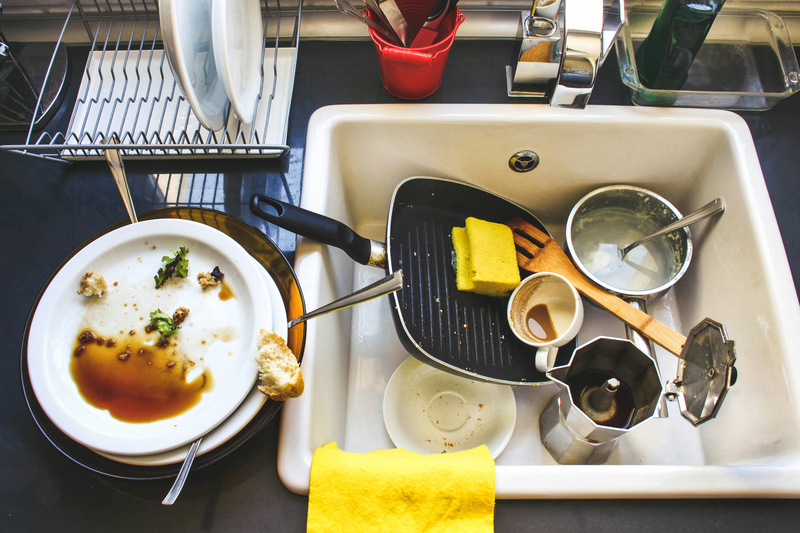Making Appliances Move-Ready
Posted on 04/05/2025
Moving can be a daunting task, especially when it comes to large and complicated appliances. Ensuring your heavy-duty household electronics are move-ready not only protects them from damage but also makes the overall moving process smoother and less stressful. Whether you're relocating across town or to a different state, understanding how to prepare your appliances can save time, money, and effort.
Understanding the Importance of Preparing Appliances for a Move
The first step in making appliances move-ready is recognizing the significance of proper preparation. Safeguarding equipment like refrigerators, washing machines, ovens, and dishwashers from potential damage is vital. Mishandling these appliances can result in costly repairs or replacements and even compromise their functionality.

Initial Steps Before Preparing Your Appliances
- Read the Manuals: Refer to the user manuals of your appliances for specific instructions related to moving. Manuals often provide information on how to disassemble or prepare the device for transport.
How to Make Specific Appliances Move-Ready
Refrigerators and Freezers
Refrigerators are among the largest and heaviest appliances to move. Here's how to prep them:
- Empty and Clean: Remove all items and clean the interior to avoid odors and mold. Leave the door open to air out the appliance.
- Defrost: Turn off the refrigerator and allow it to defrost. This usually takes at least 24 hours.
- Disconnect and Secure: Disconnect the power and water lines, and securely tape any loose parts like shelves.
- Use Moving Equipment: Use a dolly to move the refrigerator, ensuring it stays upright to avoid compressor damage.
Washing Machines and Dryers
These appliances require specific steps to ensure they are move-ready:
- Disconnect and Clean: Disconnect power and water supply lines. Clean the drums to remove any residual water or debris.
- Secure Moving Parts: Use transit bolts to secure the drum of the washing machine and tape down any loose components, such as knobs or doorPrepare the Dryer: Clean the lint trap and ensure the gas line (if applicable) is safely disconnected by a professional.
Ovens and Stoves
Whether gas or electric, ovens and stoves need careful handling:
- Disconnect: Safely disconnect gas lines (if applicable) and the electrical connection. Hire a professional if unsure.
- Remove and Secure: Remove and pack burner grates, knobs, and other removable parts separately.
- Clean: Clean the appliance to remove any leftover grease or food particles.
Dishwashers
Prepping a dishwasher involves several steps:
- Empty and Clean: Remove all dishes and clean the interior to prevent mold.
- Disconnect: Disconnect the power and water supply. Drain any remaining water.
- Secure Loose Parts: Tape the door shut and secure any removable racks or trays.
Pros and Cons of DIY Appliance Preparation
Here are the advantages and disadvantages of preparing appliances for a move by yourself:
- Pros:
- Cost Savings: Doing it yourself saves money on professional movers.
- Control: You have complete control over the process.
- Cons:
- Time-Consuming: It requires a significant amount of time and effort.
- Potential for Mistakes: Incorrect handling can lead to damage.
Tips for a Successful Appliance Move
- Plan in Advance: Start the preparation process at least a week before the move.
- Hire Professionals: Consider hiring professional movers for heavy and complex appliances.
- Label Everything: Clearly label components and connections to simplify reassembly.
- Keep Manuals Handy: Have the user manuals accessible during the move.

Takeaways
- Proper planning and preparation are crucial for moving appliances safely.
- Each appliance requires specific steps to ensure they remain protected during the move.
- Consider the pros and cons of DIY versus professional moving services.
Conclusion
Making appliances move-ready demands time, effort, and careful attention. By following step-by-step guidelines and essential tips, you can safeguard your appliances against damage and ensure a smooth transition to your new home. Whether you opt for a DIY approach or hire professionals, the key lies in meticulous planning and preparation. With the right measures in place, your appliances can be safely transported, saving you from potential stress and costly repairs.



















